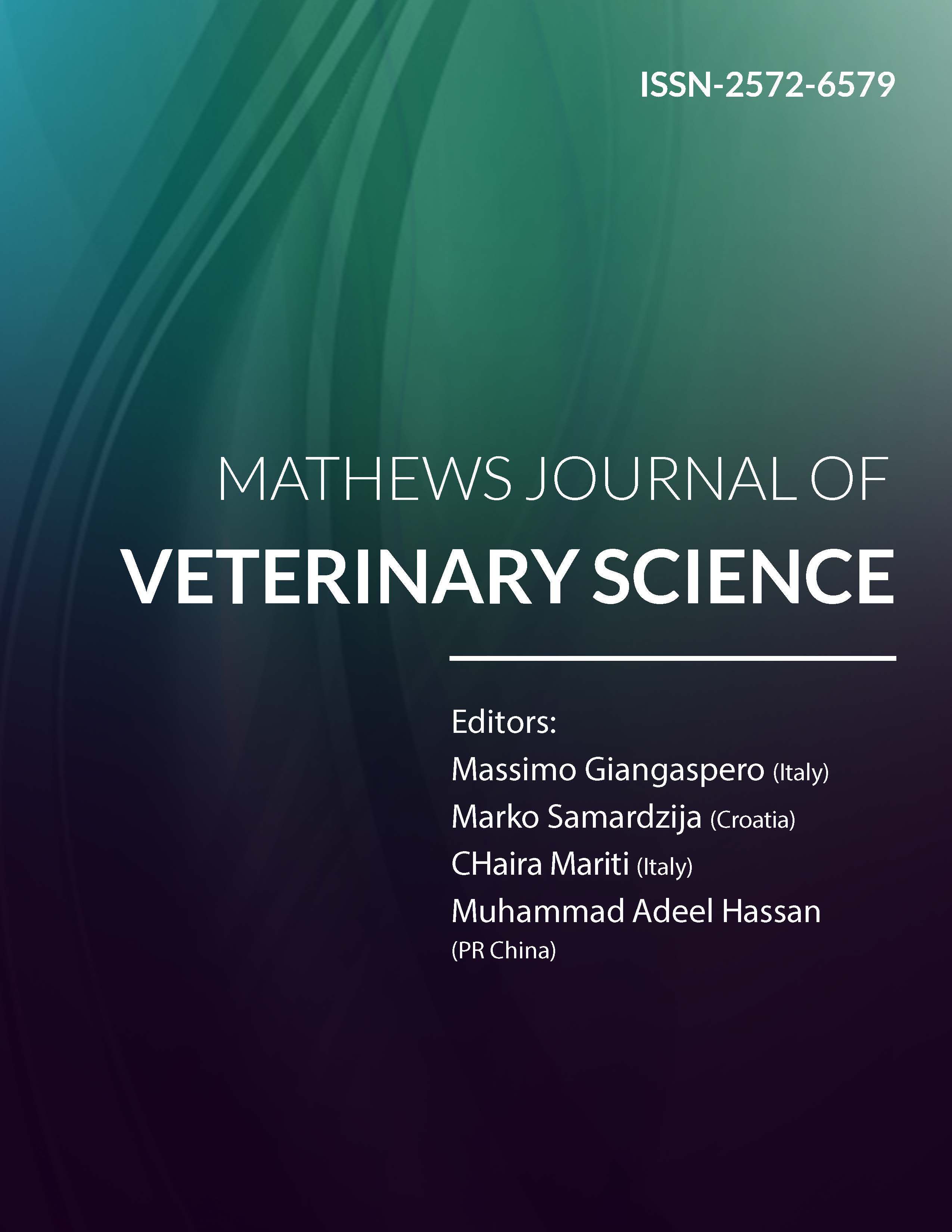
Information Links
Previous Issues Volume 7, Issue 3 - 2023
Feline Sporotrichosis: Case Report
Marcela Sargo Gatti1, Juliana Weckx Peña Muñoz1, Alexandre Fakih Cascardi5, Esther Lopes Ricci2, Maria Aparecida Nicoletti1,3, André Rinaldi Fukushima1,4,*
1CETAC—Veterinary Training Center, São Paulo 01532-000, Brazil
2Mackenzie Presbyterian University, Center for Biological and Health Sciences, Graduate Program in Developmental Disorders, São Paulo, SP, Brazil
3Faculty of Pharmaceutical Sciences, University of Sao Paulo, Sao Paulo 05508-000, Brazil University Center of the Americas, Sao Paulo, Brazil
4University of São Paulo, Faculty of Veterinary Medicine and Animal Science, Department of Pathology, Graduate Program in Experimental and Comparative Pathology, São Paulo, Brazil
5University of Marilia, Brazil
*Corresponding author: André Rinaldi Fukushima, CETAC—Veterinary Training Center, São Paulo 01532-000, Brazil, and University of São Paulo, Faculty of Veterinary Medicine and Animal Science, Department of Pathology, Graduate Program in Experimental and Comparative Pathology, São Paulo, Brazil, Tel: (11) 98133-7311, ORCID: 0000-0001-6026-3054; E-mail: [email protected].
Received Date: July 14, 2023
Published Date: July 27, 2023
Citation: Gatti MS, et al. (2023). Feline Sporotrichosis: Case Report. Mathews J Vet Sci. 7(3):23.
Copyrights: Gatti MS, et al. © (2023).
ABSTRACT
The main factor of feline sporotricosis is the action of the fungus Sporothrix schenckii, being a chronic or subacute disease transmissible among domestic animals, also affecting humans. With increasing rates of transmission from felines to humans, zoonosis is worrying, both for health policies and for animal protection policies, since many animals are abandoned when contracting sporotrichosis, generating greater risks of spreading the disease among humans and other animals. Therefore, the objective of the article is to demonstrate that the disease can be successfully treated through the report of clinical experience. The method used for diagnosis was by imprinting the lesion, where the presence of the fungus Sporothrix schenckii was found in the yeast form with degenerated neutrophils and macrophages. The treatment performed was with Itraconazole at a dose of 100mg/day in the manipulated, similar and original versions, showing through the report the greater effectiveness of the original version of the drug.
Keywords: Zoonosis, Domestic animals, Treatment of Sporotrichosis.